
✈ Cold War Naval Aviation
Navies around the world 1946-90: circa 30,000 planes & helicopters
Introduction
History of cold war aircrafts from the early post-war developments to war lessons, secret programs: The Cold War saw the absolute domination of the jet aircraft. It could be felt by everybody in the field or aeronautics in the mid-1940s already and was particularly clear in 1946. WW2 German tech in particular would influence aircraft engineering for twenty years -not counting American and Soviet aerospace! There are plenty of interesting models on both sides and in Europe, in particular from the 1960s that are unquestionably landmarks in aviation history.
WW2 early jets
German, british, American Precursors.
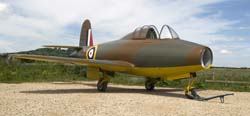 We can trace back the development of cold war aviation right to the Romanian Coanda plane, an amazing prototype of 1912, first aicraft flying with a jet turbine. It was not reliable enough to carry some significant weight, and the project was dropped for good before 1913. However various tests were made in the interwar, up to the 1941 British Gloster E28, which was the first allied jet aircraft.
We can trace back the development of cold war aviation right to the Romanian Coanda plane, an amazing prototype of 1912, first aicraft flying with a jet turbine. It was not reliable enough to carry some significant weight, and the project was dropped for good before 1913. However various tests were made in the interwar, up to the 1941 British Gloster E28, which was the first allied jet aircraft.
It was preceded by German’s Heinkel He 178 which flew in 1939, the world’s first jet. During the war, Nazi Germany in particular was very active in this field, to the point of having no less than five jet aircraft in service when the war ended. But blueprints an projects uncovered by the allies were above all, testimonies of groundbreaking concepts that will appear during the cold war: swept-wing, semi-stealth flying wing, variable geometry, advanced radars, missiles, etc.
Nazi Germany aeronautical research was lightyears ahead of the competition. All these paper models would end to the various aviations of the Cold War, on both sides, with design influences running until the late 1960s.
Work in progress !
The thundering fifties
Korea, the first proxy war.
 The Korean war saw the transition between the first and second generation jets. 1st generation were the P80 Shooting star, studied in WW2, and second, the F86 Sabre, but also MIG-15 and 17, which had in common an heavy armament, better speed and power (although still sub-sonic) and swept-wings. A lot of very influencial designs apparared at the end of the fifties, like the F4 Phantom (1958) and MIG-21 Fishbed (1959), landmarks of the Cold War. The second was the most produced military jet in history. Besides, seaplanes were still something to be taken seriously while cargo planes were developed, in parallel often to the first regular world airlines. It was also the full development of nuclear strategic aviation, including tests of a nuclear-powered bomber.
The Korean war saw the transition between the first and second generation jets. 1st generation were the P80 Shooting star, studied in WW2, and second, the F86 Sabre, but also MIG-15 and 17, which had in common an heavy armament, better speed and power (although still sub-sonic) and swept-wings. A lot of very influencial designs apparared at the end of the fifties, like the F4 Phantom (1958) and MIG-21 Fishbed (1959), landmarks of the Cold War. The second was the most produced military jet in history. Besides, seaplanes were still something to be taken seriously while cargo planes were developed, in parallel often to the first regular world airlines. It was also the full development of nuclear strategic aviation, including tests of a nuclear-powered bomber.
The sixties
Missiles, radars, electronics, and Viet-Nam
 This decade saw further developments of jet concepts (like the variable geometry, fully exploited in the 1970s), often with twin engines, of multirole aircrafts and fighter-bombers, of mach-two, even mach-three jets, bombers like the Amrican Valkyrie of the answering Soviet Mig-25 Foxbat interceptor, new materials, and above all, the first practical missiles, either infrared or radar-guided, but also the development of electronics, from avdanced radars to tracks targets far away (and shoot missiles at larger distances), to the first electronic jammers, reconnaissance suystems (Friend or foe), ECM, decoys and other systems. This would not be complete without the Vietnam war, which saw the use of many jets in combat as well as the helicopter, in a grand scale.
This decade saw further developments of jet concepts (like the variable geometry, fully exploited in the 1970s), often with twin engines, of multirole aircrafts and fighter-bombers, of mach-two, even mach-three jets, bombers like the Amrican Valkyrie of the answering Soviet Mig-25 Foxbat interceptor, new materials, and above all, the first practical missiles, either infrared or radar-guided, but also the development of electronics, from avdanced radars to tracks targets far away (and shoot missiles at larger distances), to the first electronic jammers, reconnaissance suystems (Friend or foe), ECM, decoys and other systems. This would not be complete without the Vietnam war, which saw the use of many jets in combat as well as the helicopter, in a grand scale.
Development of Cold War Technology
When thinking of Jets, of course the related engines came to mind. Progresses made there were immenses, and soon allowed to reach Mach 2, before the end of the sixties, and through research in the seventies, up to Mach 7, not counting aerospace speeds. But this was also about the development of missiles, smart bombs, and electronics, from radars to countermeasure and other systems that are taken for granted today.
Development of the Jet engines
From ww2 turbines to thrust vectoring.
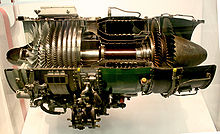 The very first jet was 1912 Henri Coanda turbine. It is still not known with certaintly if it flew, but it is certainly the birth of jet propulsion. Strangely, WW1 and the interwar missed Jet power, which would reveal itself in WW2, with the effect of technology being accelerated by the goal: To win at all costs. By 1943 it was clear for everybody that jet propulsion would gave fighters mastery of the skies and a race went on, won by the Germans, hands off. But the Americans after the war were the first to reach Mach I, and also Mach II, Mach III and well beyond, with the rest of the world trying to catch up. Afterburners and statoreaction, even nuclear power were also tested as well as various air intakes which often help to date the designs. Some concepts became standards. But jet engines would only improve incrementally on the long run. The very end of the cold war saw thrust vectoring being tested, first step towards the fourth generation ultra-agile aicrafts of the next decade.
The very first jet was 1912 Henri Coanda turbine. It is still not known with certaintly if it flew, but it is certainly the birth of jet propulsion. Strangely, WW1 and the interwar missed Jet power, which would reveal itself in WW2, with the effect of technology being accelerated by the goal: To win at all costs. By 1943 it was clear for everybody that jet propulsion would gave fighters mastery of the skies and a race went on, won by the Germans, hands off. But the Americans after the war were the first to reach Mach I, and also Mach II, Mach III and well beyond, with the rest of the world trying to catch up. Afterburners and statoreaction, even nuclear power were also tested as well as various air intakes which often help to date the designs. Some concepts became standards. But jet engines would only improve incrementally on the long run. The very end of the cold war saw thrust vectoring being tested, first step towards the fourth generation ultra-agile aicrafts of the next decade.
Development of Missiles
Modern weaponry, missiles and smart bombs.
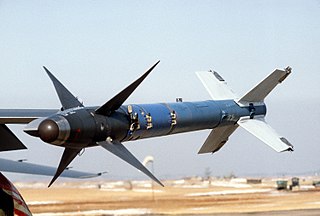 Air to air missiles were also a German invention in the end of WW2. These were a very improved version of their R4M rocket, launched from the revolutionary Me 262. Unguided rocketry was not new. The first Le Prieur and other models were excellent balloon-busters in WW1. The R4M was an unguided rocket used operationally, however German engineers designed in 1944 the Ruhrstahl-Kramer RK 344, the first wire guided, air-to-air missile. Wire-guided missiles would stay in service at least on ground AFVs for years, but in aviation, with the new speeds involved, new systems had to be found. Two “schools”, or autonomous guiding systems were developed, infra-red or radar-guided. Also gradual improvements over decades ended with the perfect “fire and forget” system we know today. Aouside air-to-air combat, ground combat also benefited from these developments, with anti-tank missiles, and guided or “smart” bombs.
Air to air missiles were also a German invention in the end of WW2. These were a very improved version of their R4M rocket, launched from the revolutionary Me 262. Unguided rocketry was not new. The first Le Prieur and other models were excellent balloon-busters in WW1. The R4M was an unguided rocket used operationally, however German engineers designed in 1944 the Ruhrstahl-Kramer RK 344, the first wire guided, air-to-air missile. Wire-guided missiles would stay in service at least on ground AFVs for years, but in aviation, with the new speeds involved, new systems had to be found. Two “schools”, or autonomous guiding systems were developed, infra-red or radar-guided. Also gradual improvements over decades ended with the perfect “fire and forget” system we know today. Aouside air-to-air combat, ground combat also benefited from these developments, with anti-tank missiles, and guided or “smart” bombs.
Development of Electronics
From radars to counter-measures.
There would be no modern dogfights without air-to-air missiles, and therefore without radars. Prior to the invention of navigational and search radars, either active or passive systems, planes flew only by clear weather, and by dayfor best results. But electronics enabled the “all-time, all-weather interceptor”, and a whole range of electronic systems were invented and perfected over the years, ultimately giving borth to the term “avionics” (contraction of “aviation” and “electronics”). And as the cold war was a race, there were constant upgraded in detection, but also in jamming the opponent by various ways. Since radar range differred, some aicrafts were tailored deliberately to cover huge areas and serve entire air fleets over a theater of operations. The last step was the introduction of satellites and GPS, both for navigation and control & command.
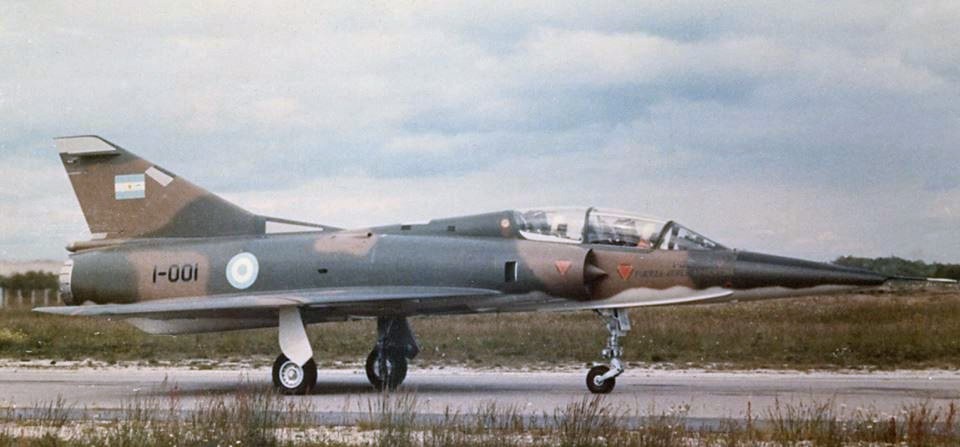
Wing design
Testing the best all-around wing designs.
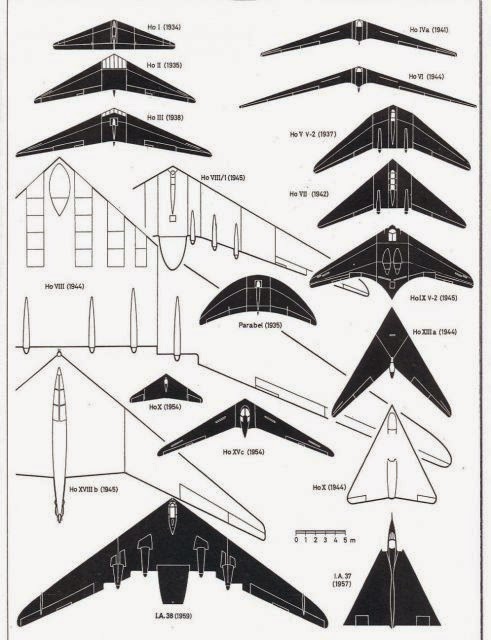 Designers were already aware that when an aircraft approaches the sound velocity (Mach 1), blast waves begin to form in the percussion area, causing a great increase in resistance. The wings had to be slimmer and smoother, contributing to a form of elegance that was a measure of how thin the wing was in relation to the cord. A small straight, short, thin wing caused less resistance, so the first aircraft used this type, including the Bell X-1 and Lockheed F-104 Starfighter.
Designers were already aware that when an aircraft approaches the sound velocity (Mach 1), blast waves begin to form in the percussion area, causing a great increase in resistance. The wings had to be slimmer and smoother, contributing to a form of elegance that was a measure of how thin the wing was in relation to the cord. A small straight, short, thin wing caused less resistance, so the first aircraft used this type, including the Bell X-1 and Lockheed F-104 Starfighter.
But these were plagued by high takeoff speeds, the Starfighter even causing a significant number of fatalities during takeoff and in flight. German designers once thought that to rotate the wing at an angle to cause a delay in the emergence of thrust waves was a solution. This made the wing structure larger and more flexible, mcapable even of reversing the action of flight control mechanisms. This dangerous behavior was not fully understood before long. Other problems included divergent oscillations that could cause lethal forces.
An interesting example was the de Havilland DH.108 Swallow. The delta wing has a recessed edge while retaining a satisfactory deep root of the wing for structural stiffness, and from the French Dassault Mirage fighter, this shape became a relatively popular choice in the 1960s. But the delta wing proved to be no longer maneuverable from a conventional cone wing, and various other shapes were tried, truncated, double delta and others appeared (see the BAE Lighting).
Air speed
Conquering high speeds
 As speed increased and became fully supersonic, the wing center of gravity was moved backward, causing a change in the longitudinal lining and a torque reduction known as retraction. Supersonic aircraft had to have the ability to change efficiently in order to maintain full control over all phases of the flight. At speeds above Mach 2.2, the spindle begins to heat due to air friction, causing both thermal expansion and loss of force in light alloys used at lower speeds.
As speed increased and became fully supersonic, the wing center of gravity was moved backward, causing a change in the longitudinal lining and a torque reduction known as retraction. Supersonic aircraft had to have the ability to change efficiently in order to maintain full control over all phases of the flight. At speeds above Mach 2.2, the spindle begins to heat due to air friction, causing both thermal expansion and loss of force in light alloys used at lower speeds.
Also, jet engines reached their limits. The Lockheed SR-71 Blackbird was made of titanium alloys, and had a special grooved surface to absorb the thermal expansion and double-cycle ramjet engines that used a special fuel resistant to high temperatures. The retraction was limited by the use of long “vertebral” wings blended to the fuselage, which contributed to greater buoyancy at ultrasonic velocities.
Another problem was demonstrated in ultrasonic flight, the environmental impact. A large aircraft caused a strong blast, able in some cases to break windows and causing more damage, while high resistances resulted in high fuel consumption and more pollution of the atmosphere as shown by the Concord’s failure;
Jet designs
New types of engines
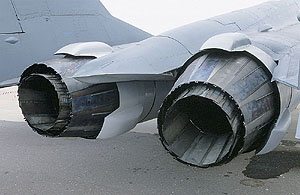
Next development of the jet engine was the afterburner. Simple turbo-jets flew a little faster than the speed of sound. In order to increase the speed for ultrasonic flight, fuel needed to be injected directly into the exhaust of the engine, contrary to divergent nozzles similar to those existing in rocket engines. As the fuel burned, it expanded and reacted to the nozzles, driving the exhaust back and the engine further forward. Turbocharged engines had however high fuel consumption, and even higher with afterburning. One way to make an engine more efficient was to pass a large air mass at a lower speed.
This has led to the development of the bypass turbine engine, in which a large diameter front fan conveys air to the compressor and the rest around a bypass, from where it flows behind the engine at a lower speed than in the exhaust of the jet. The fan and the compressor have to rotate at different speeds, leading to two coil turbines where two rows of turbines are mounted in concentric axes rotating at different speeds to guide the fan and the high pressure compressor respectively.
Going one step further, the large bypass engine is even more efficient, with three coils each rotating at different speeds. Another way to improve efficiency was to increase the internal combustion temperature. This required improved materials to maintain power at high temperatures, and the growth of engine core has largely followed the progress made in materials, for example through the development of ceramics and monocrystalline turbine metal blades. Rolls-Royce even developed a synthetic carbon fan but in practice it turned out that the material did not possessed enough strength, and turned to more conventional titanium.
Naval Aviation: Components and Missions
As decades passed, Naval Aviation mutated a bit from WW2. However it was fundamentally still split into the following:
- Carrier-Based Aviation: Transition to Jets, and nuclear capability.
- Coastal Aviation: Mostly SAR, taken over by helicopters
- Long Range Patrol Aviation: Turboprop or Jet bombers.
- Assault Aviation: Marines Component with helicopters/VSTOL
Of these, at least three existed: Carrier-based aviation was born in 1917 and developed into the interwar and WW2. It just transitioned into the late 1940s and early 1950s to jets, and generations passed. Alonsgide development of the helicopter ensured very effective ASW/SAR missions, WW2 saw also the rise of USMC air component in missions, and development of amphibious warfare was futher refined into an art form throught the cold war. Long Range Aviation, had two components: Land-Based, derived from traditional heavy bombers, and transitioning from piston-power to jet/turboprops. And there was the sea-based component: Seaplanes
Death of Seaplanes
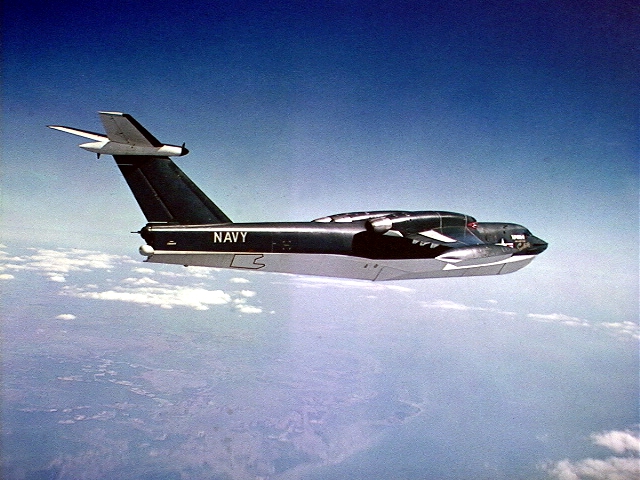
Last of her kind: The Martin P6M Seamaster, only 12 produced before program cancellation.
The cold war signed the disappearance of seaplanes, like the airships did not survived the interwar. They negated their advantages in the 1960s, before completely disppearing from the military as it happened in the civilian sector. The few attempted jets seaplanes were merely prototypes although more traditional models went on into service until the 1990s. They were very few in comparison to WW2 or the interwar. At first their key advantages, landing on water, so almost anywhere, and being extremely long-range and heavy load capable, seemes still relevant in 1950 but rapid progress in civilian aviation had them condembed to oblivion, no longer relevant due fats long range carriers.
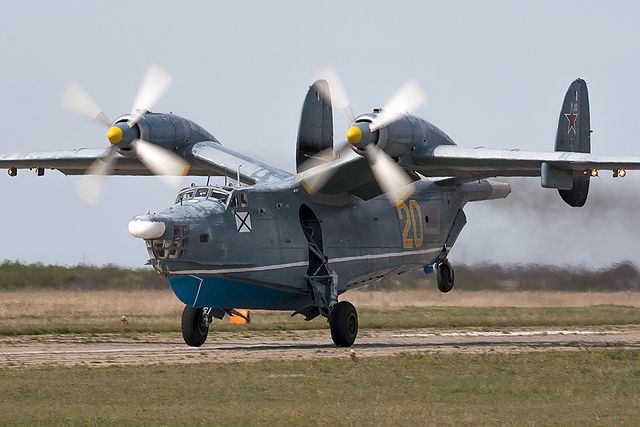
Beriev Be-12 Chaika

Shin Meiwa

Harbin SH-5
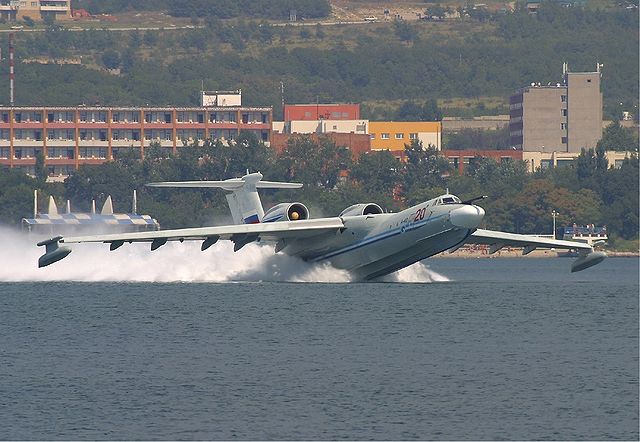
The Beriev A-40 Gelendzhik
On the military side, new long range patrol planes could cover almost twice as much distance as well. The advantage of WW2, small islands and islets usable of supply bases for seaplanes and seaplane carriers became obsolete.
No such ship type was ever built after WW2. The last cold war seaplanes were:
- Grumman Mallard 1946
- Edo OSE-1 1946
- Short Solent 1946
- Chetverikov TA-1 1947
- de Havilland Canada DHC-2 Beaver 1947
- Grumman Albatross 1947
- Hughes H-4 Hercules (completed & first flight, prototype)
- Saunders-Roe SR.A/1 1947 (jet fighter seaplane prototype)
- Short Sealand 1947
- Beriev Be-8 1947
- Martin P5M Marlin 1948
- Supermarine Seagull ASR-1 1948 (prototype successor to the Walrus)
- Nord 1400 Noroit 1949
- Norsk Flyindustri Finnmark 5A (interesting Norwegian prototype)
- SNCASE SE-1210 French prototype flying boat 1949
- Beriev Be-6 1949
- Convair R3Y Tradewind USN patrol flying boat 1950
- Goodyear Drake (proto seaboat) 1950
- de Havilland Canada DHC-3 Otter 1951 (RCAN)
- Saunders-Roe Princess 1952 (RN requisition possible)
- Beriev R-1 turbojet prototype seaplane 1952
- Convair F2Y Sea Dart Prototype delta jet fighter seaplane 1953
- Martin P6M SeaMaster strategic bomber flying boat 1955
- Beriev Be-10 1956
- Ikarus Kurir H 1957
- Beriev Be-12 Chaika 1960
- Shin Meiwa UF-XS prototype 1962
- Shin Meiwa PS-1 patrol flying boat 1967
- Canadair CL-215 1967 water bomber, some operated by the RCAN
- GAF Nomad patrol australian land/floatplane 1971
- Harbin SH-5 Main PLAN patrol flying boat 1976
- Cessna 208 Caravan transport flotplane (some navies) 1982
- Dornier Seastar prototype 1984
- Beriev Be-40/A-40 Albatross prototypes 1986
Rise of Helicopters

In 1944 already, the US Army operated the Sikorky R.4, first allied operational helicopter, used by the United States Coast Guard. The Germans meanwhile operated a few models, sich as the Flettner Fl 282 observation models, and the larger Focke-Achgelis Fa 223 Drache, Fa 225, Fa 284 and Fa 325 Krabbe, a projected 4-rotors naval helicopter. The subject is very interesting and will be treated as a standalone post in the WW2 Kriegsmarine section.
Soon between the late 1940s and early 1950s a dozen of new models emerged, once the base principle were mastered for steering, between the tail rotor and main ones mechanical systems. They all flew with simple piston engines, which were reliable and well known, but also very noisy. The 1960s saw the side of turbines helicopters, and improved performances. In the 1970s the fenestron made its apparition for tail rotors, improving performances. All along, all aircraft carriers, assault ships, frigates, destroyers and cruisers needed helicopters aboard for various task, notably SAR, ASW patrol and liaison. There were about 11 main manufacturers around the world that provided the bulk of naval helicopters worldwide, but almost none specialized.
AH-1Z_and_UH-1Y_during_trials_on_USS_Bataan_LHD-5_2005
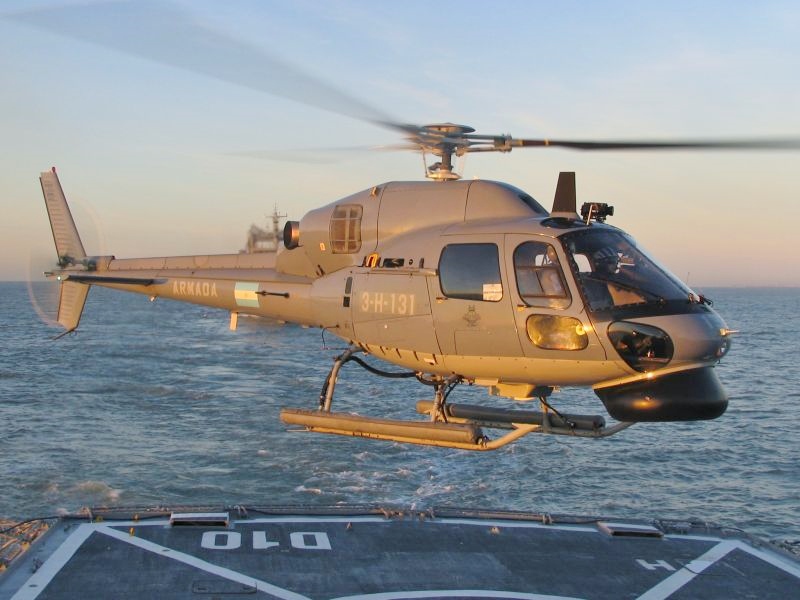
ArgeNavy-Fennec3

Kamov_Ka_25_IndianNavy
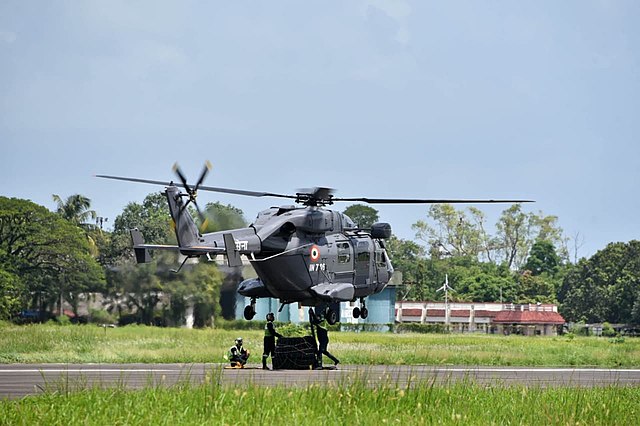
IndianNavyHalDhruv
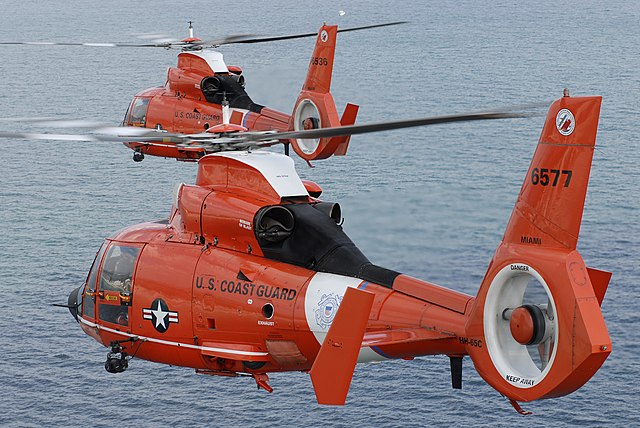
Two_coast_guard_HH-65C_Dolphin_helicopters

Saar45-operating-Dolphin

Royal_Saudi_Navy_AS565_Panther
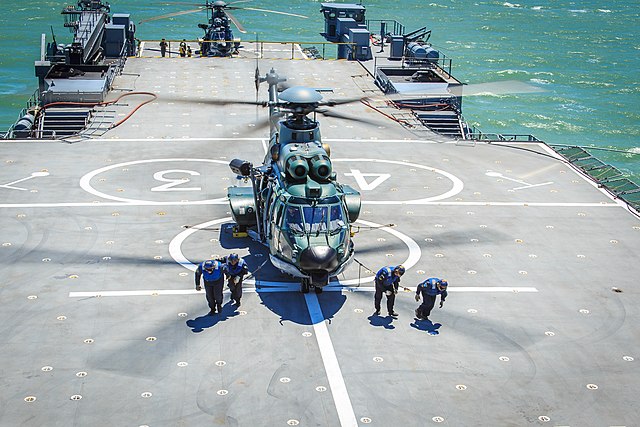
Caracal-Brazilian-Navy_2018

MH-53E_Super_Stallion_JMSDF_Mine_Squadron_111
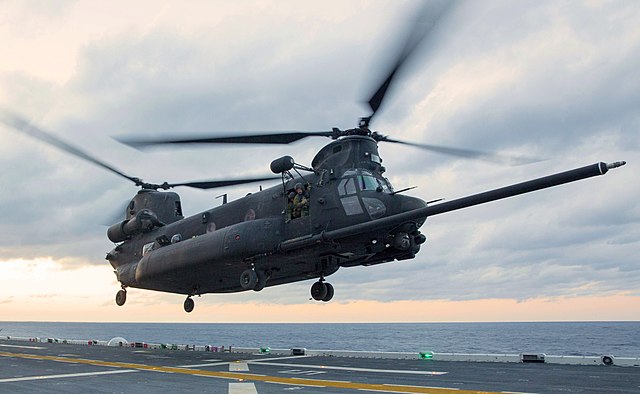
MH-47E_Chinook_lands_on_the_flight_deck_of_the_USS_Kearsarge
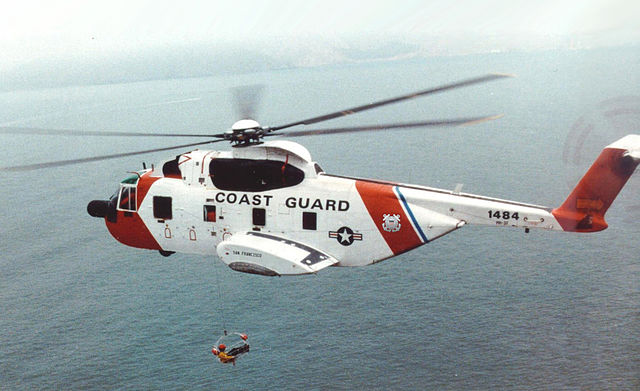
HH-3F_Pelican_Coast_Guard_Air_Station_San_Francisco
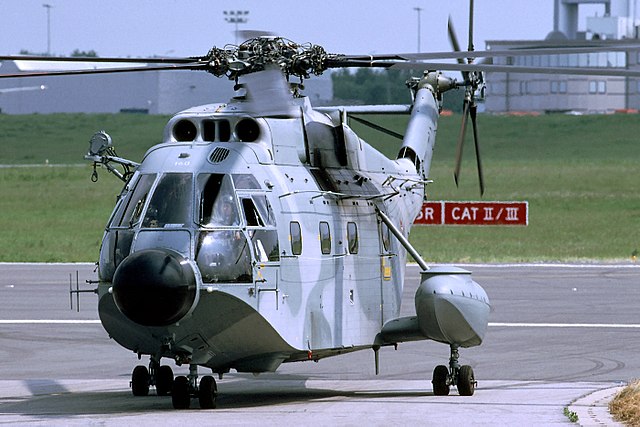
SA321G_Super_Frelon_in_2003
![]()
Kaman_SH-2F_Seasprite_USS_Nicholson
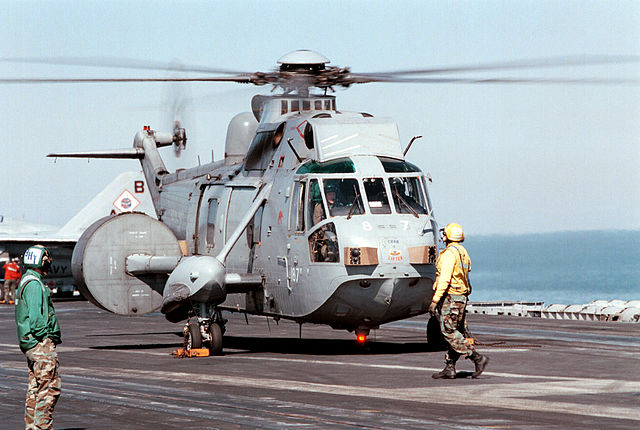
RN-SeaKing_CVN-73_1998
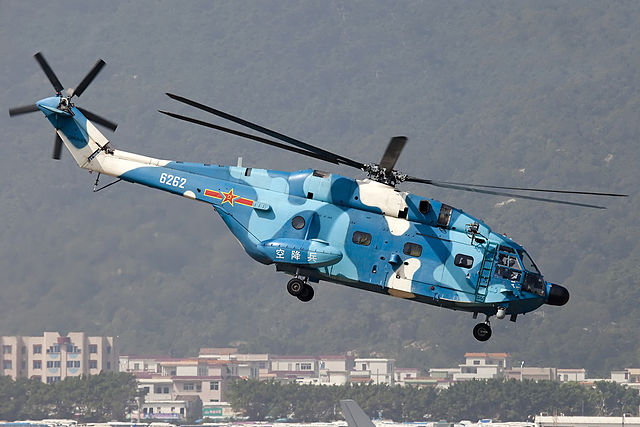
PLAAF_Changhe_Z-8KA
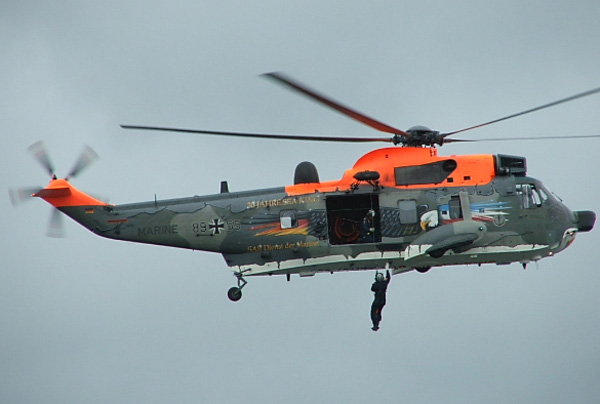
Bundesmarine-Kiel-SeaKing
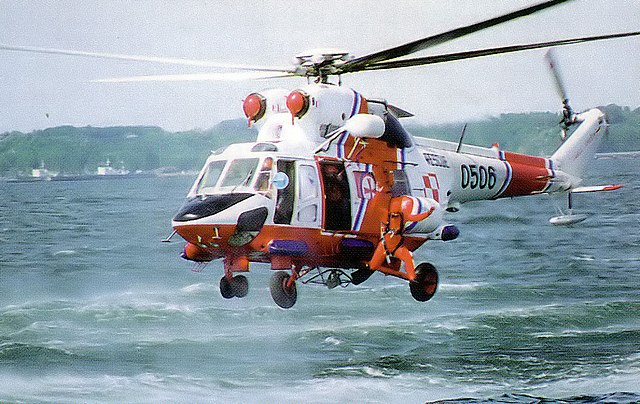
Anakonda_NTW_PolishNavy
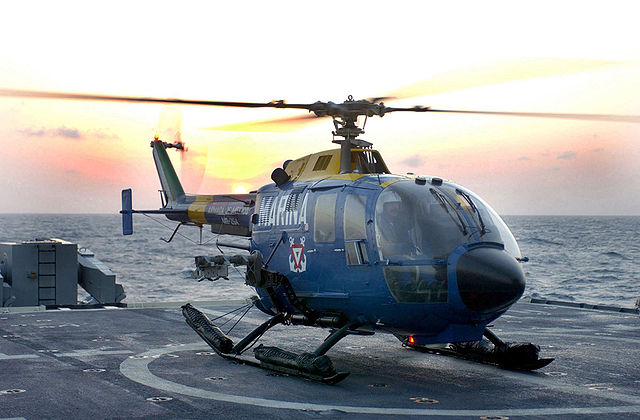
MBB_BO-105_Mexican_Navy
Naval Helicopters per country:
-
Canada:
- Agusta-Westland CH-149 Cormorant SAR model (Coast guard)
- Harbin Z-5 (1958)
- Harbin Z-9 Haitun (1981)
- Changhe Z-8 (1985)
- Harbin Z-19 (for assault, dev 2011)
- Harbin Z-20 (in development)
- Agusta A.106 (1965) Light anti-submarine warfare helicopter prototype
- Agusta-Westland Apache (from assault ships)
- Agusta Bell AB-205 (1961)
- Agusta Bell AB-212 (1971)
- Agusta AS-61 (1968)
- Hal Dhruv (Indian Navy)
- HAL Rudra (assault ships only)
- Aérospatiale SA313/318 Alouette II (1955)
- Aérospatiale SA316/319 Alouette III (1959) 12+ navies
- Aérospatiale SA321 Super Frelon (1965)
- Eurocopter AS532 Cougar (Some navies)
- Eurocopter AS565 Panther (9 navies)
- EC725 Caracal/Super Cougar H225M (4 navies)
- Eurocopter Fennec (5 navies)
- Eurocopter MH-65 Dolphin (IDF and US Coast Guard)
- Eurocopter UH-72 Lakota (USN only)
- MBB Bo 105 (1967) 6 navies and 3 coast guards
- NHIndustries NH90 (planned 1990, first flight 1995)
- Mitsubishi H-60 (1987)
- PZL W-3 Sokół (1979)
- IAR 330 (1975) Romanian Navy for evaluation
- Westland Lynx (1971): Royal Navy & others
- Westland Scout (1960) RAN only
- Westland Sea King (1969): USN, RN, BdM, RCAN, RAN, and many others.
- Westland Wasp (1962): Dedicated ASW RN model, +6 navies
- Westland Wessex (1958): RN, RAN, and Uruguayan Navy
- Westland Whirlwind (1953): RN and 3 others.
- Westland WS-51 Dragonfly (1948): RN only.
- Gyrodyne QH-50 DASH: Naval Helicopter Drone
- Hiller ROE Rotorcycle (1956) USMC only
- Piasecki HRP Rescuer (1945) USN
- Bell UH-1N Twin Huey (1969), USN/USMC and other navies
- Kaman SH-2 Seasprite (1959)
- Kaman SH-2G Super Seasprite (1982)
- Sikorsky CH-53 Sea Stallion (1966) Navy/USMC
- Sikorsky SH-60 Seahawk (1979) Navy/USMC
- Boeing CH-47 Chinook (1961) Assault only
- Sikorsky S-61R (1959) Jolly Green Giant (Coast Guard)
- MH-53E Sea Dragon (1974) USN/USMC, JSDMF
- Kamov Ka 20 (1958) proto naval helicopter
- Kamov Ka-25 “Hormone” (1960)
- Kamov Ka-27 “Helix” (1973)
- Kamov Ka-31 (1987)
- Kamov Ka-35 (development 2015)
- Kamov Ka-40 (ASW replacement for Ka-27, development 1990)
- Mil Mi-24 “Hind”, assault ships only and planned Mi-24M
- Mil-Mi 2: 4 navies
- Mil Mi-4 “Hare”: 4 navies (including soviet)
Chinese PLAN:
Italy:
India:
France:
Germany:
Japan:
Poland:
Romania:
United Kingdom:
USA:
USSR:
Royal Navy/RAN/RCAN/RNZN Helicopters
Bristol Sycamore
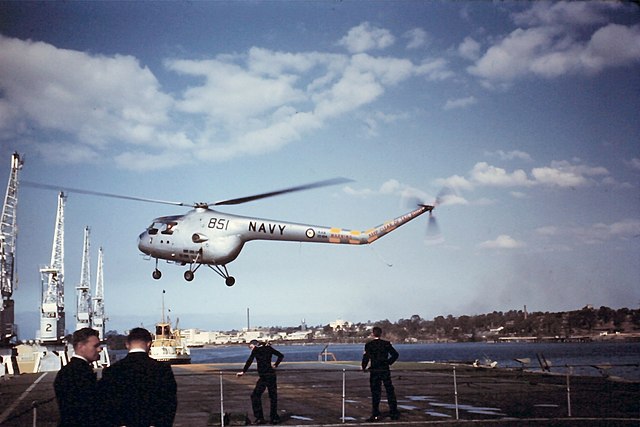
- The Bristol Type 171 Sycamore was developed and built by Bristol Aeroplane Turning Aiframe Division and named after the famous self-gritation seeds of the sycamore tree (Acer pseudoplatanus) played with by all kids. This was the first British model certified of airworthiness, and first British-designed in use with the RAF (and later RN as well).
It could accomodate up to three passengers and was deployed both in the RAF but not the FAA for search and rescue (SAR) and casualty evacuation, seeing action in the Malayan and Cyprus Emergencies, Aden and others. 180 were built. - In RN service, the model was used by the Air Sea Warfare Development Unit and the Austrlian Royal Naval Air Forc’s 723 and 724 Squadron RAN. The first was deployed on HMAS Sydney in Korea
The hybrids: Hydropters, Hovercrafts and WIG Aircrafts.
USN Aviation
Manufacturers
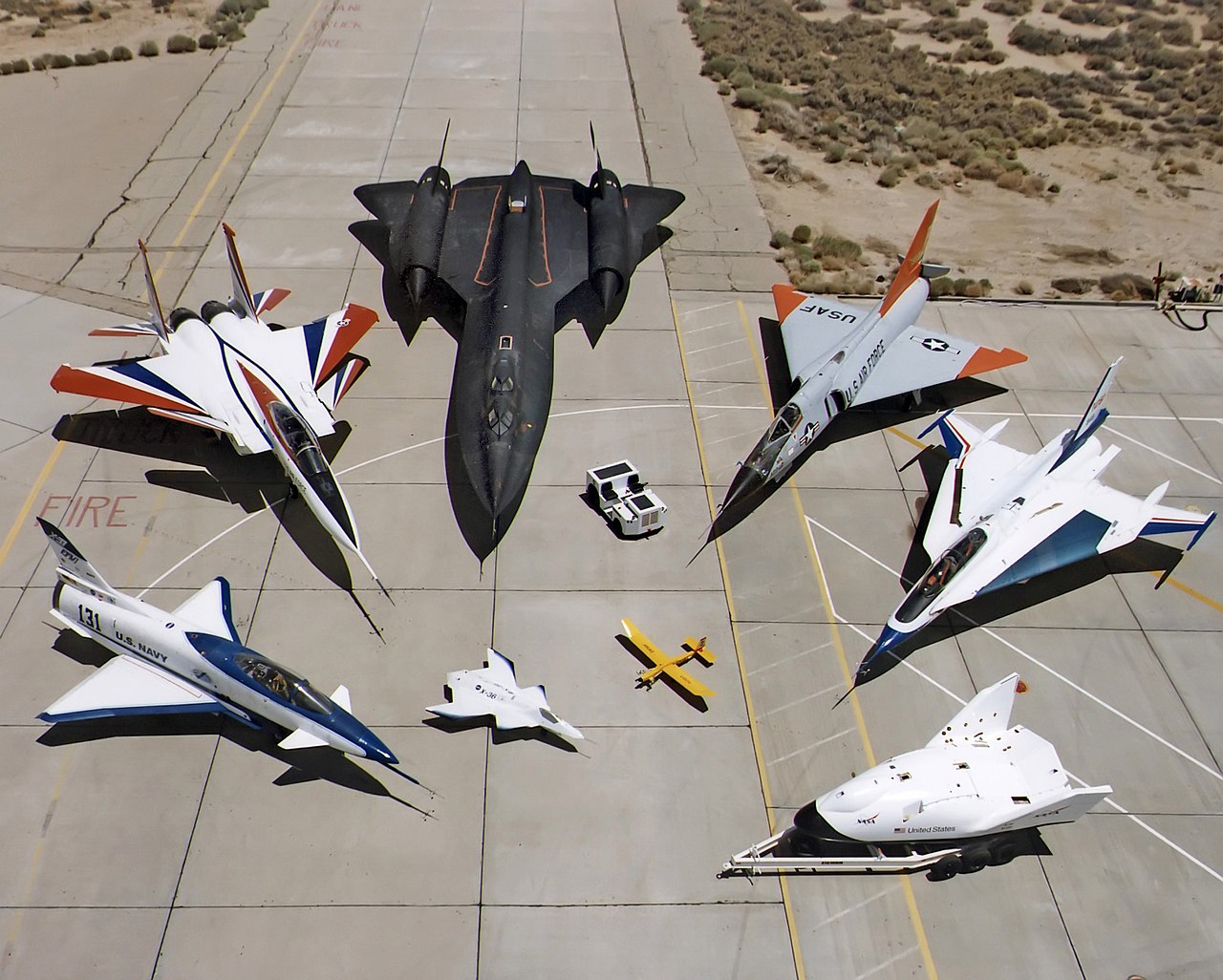
From 1945 to this day, the US Aviation at large went through a serie of tranformations and consolidations, up to the present days where only three “giants” still dominated the landscape:
Lockheed Martin, Northrop Grumman and Boeing. For the first two, the major companies involved are ovbious. These were the last ones. The ones that provided a critical mass to air operation over Europe and the Pacific in WW2, all disappeared, were absorbed and assets recycled.
Great Lakes: Fd. 1929, provided the navy (interwar) with the Great Lakes TG-1/2 derived from the Martin T4M. Defunct 1936.
Aeromarine: Provided notably the famous “Jenny” in the interwar. It went out of business in 1930.
Douglas: A big name, provider in WW2 of the Devastator and still “in the race” in 1944-45 for new models. In March 1946, Douglas Aircraft Company was granted the contract to research on intercontinental warfare (Project RAND), and became the RAND Corporation. New models such as the F3D Skyknight in 1948 and F4D Skyray in 1951 were its last contribution but the company focused later on rocketry and missiles. Merged in 1967 with the McDonnell Aircraft Corporation.
Naval Aircraft Factory: A state facory “owned” by the navy, it provided models post-WWI, interwar, and by 1942 it became the Naval Air Material Center. In 1967, NAF aero engine research merged with the Naval Air Propulsion Test Center but the entity disappered already in 1945. its assets survived through the R&D Naval Surface Warfare Center Carderock Division, notably responsible for the futuristic Zumwalt class destroyers and many other systems.
Loening: Also created like Aeromarine in 1917, the company was defunct in 1932, recycled and merged from 192 into Keystone-Loening, part of the employee creating Grumman.
Huff-Daland: NY Ogdensburg Aeroway Corp in 1920, later merged with Keystone in 1928, and the latter became a division of the Curtiss-Wright Corp.
Martin: The company in 1945 proposed the AM Mauler and went on postwar with famous navy models such as the P5M Marlin and P6M SeaMaster seaplanes. Moved to the aerospace manufacturing business, 1961 merged with Martin Marietta, and lockheed in 1995.
Consolidated: Provided notably the PB4Y Privateer. The company in 1943 merged with Vultee and the company was later known as Convair. It no longer had relations with the Navy, and was acquired in March 1953 by General Dynamics.
Vought: Provider of the first (O2/O3U), second (F4U) and third (A7V) “Corsair”, the Kingfisher, the F8U Crusader… Became Ling-Temco-Vought in 1962-1992 (missile business), later sold to Northrop.
Berliner-Joyce: Produced the OJ for the Navy but had a meteoritic existence (1929-1933).
Northrop: The company contribution was the interwar BT dive bomber and WW2 Northrop N-3PB seaplane. Returned to the Naval Business after the purchase of Grumman in 1994.
Curtiss: Another great name but not a memorable contributor of the Navy (Seagull, Seamew, Helldiver 1 and 2, Seahawk). Merged with Wright, later merged with Keystone, 1948 bankrupt, assets sold to North American Aviation.
Vultee: Contributed with prototypes to the Navy only, 1941 AVCO, 1943 Convair, 1953 General Dynamics and later divisions resold to Boeing Lockheed and McDonnell Douglas.
Brewster: Founded 1924 and Defunct 1946 after a passable industrial record in WW2 to say the list. Read about the Buffalo and the Buccaneer stories for more.
Ryan: Fd. 1934, Contributed the FR Fireball to the Navy in 1945-49, Ryan Aeronautical Company merged with Teledyne in 1969, Northrop Grumman in 1999.
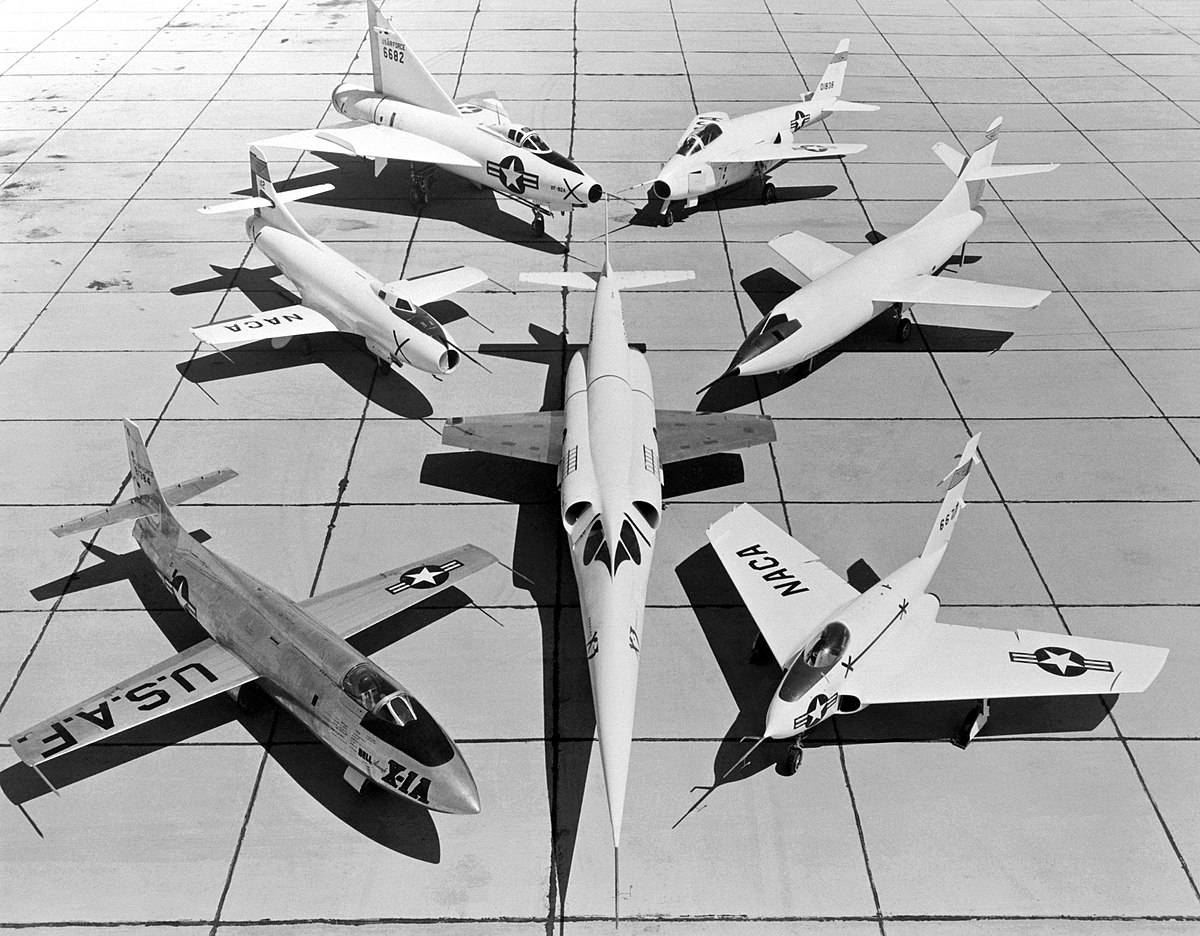
Like in the USSR, R&D was the bedrock of cold war aviation evolution. Not being at war and having to crank up massive amounts of flying ordnance, the United States reaffected their budgets in innovations across the board to give them a technological edge. Naval Aviation continued to modernize based on separate orders and and always strong rivalry with the air force, especially on questions of deterrence.
Grumman in the Cold War
The company of Leroy Grumman, started as a simple supplied of undercariages and floats, grew to the war-winning company delivering the F4F Wildcat, F6F Hellcat and TBF Avenger. In 1945 it just started production of the Hellcat’s successor, the F8F Bearcat, which only saw limited production and service, introduced when jets were all the rage. The company nevertheless afterwards produced also the AF Guardian, ASW successor to the Avenger, and jets such as the F9F Panther and F-9 Cougar, S2F Tracker and F11 Tiger, A6 Intruder, EA-6 Prowler, E-2 Hawkeye and F-14 Tomcat. Quite a predigree. The F14 was the main carrier supremacy fighter for decades, equivalent to the USAF F-15 Eagle, the E-2 hawkeye is the go-to carrier AWACS, still flying today and both the Intruder and Prowler were amazing models, the latter also still flying as prime EW platform.
Douglas & Mc Donnell Douglas
Vought
Martin
North American
Only known to have provided the navy with the FJ Fury, a “navy” version of the legendary F-86 Sabre.
European Naval Aviation
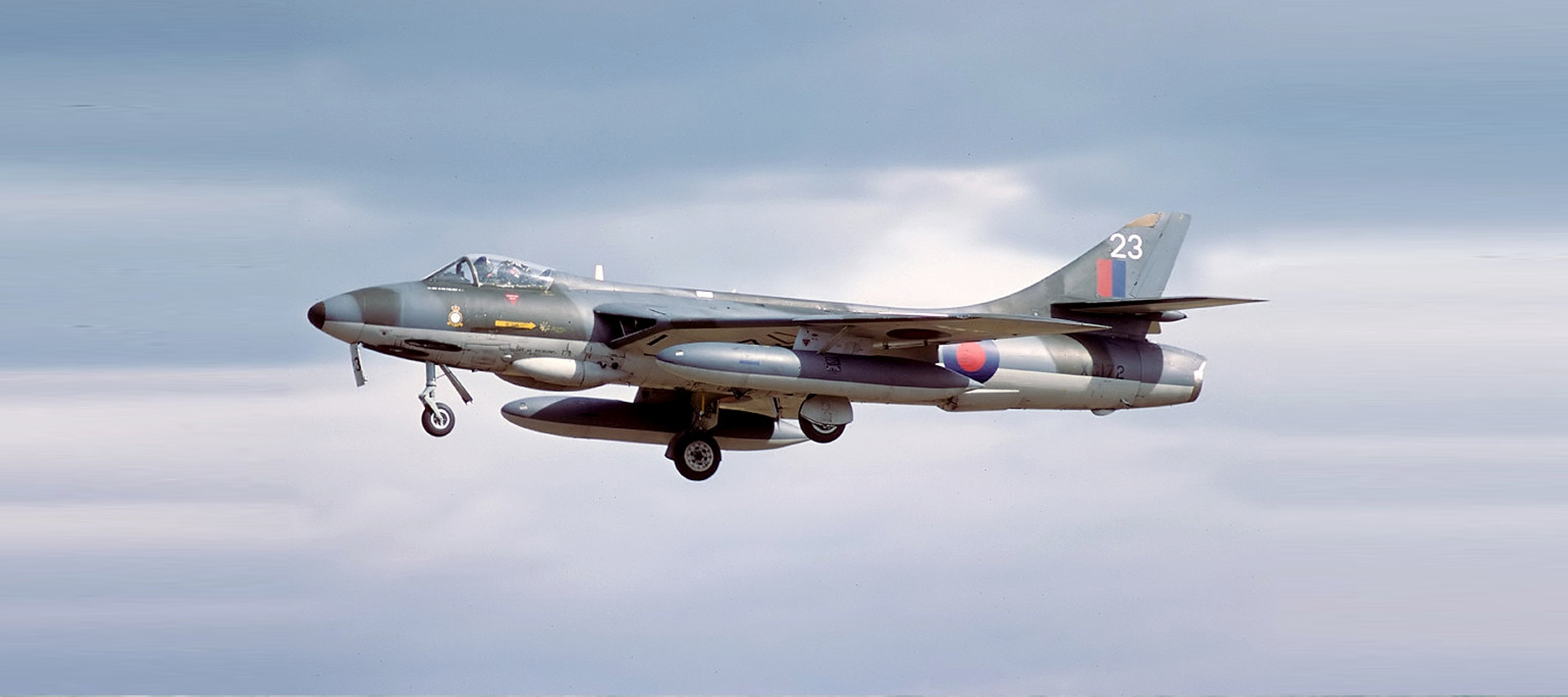
History of European Cold War Planes, jets fighters, bombers, and misc. planes and prototypes from UK, France, Italy, Germany and Spain.

 Soviet Naval Aviation
Soviet Naval Aviation
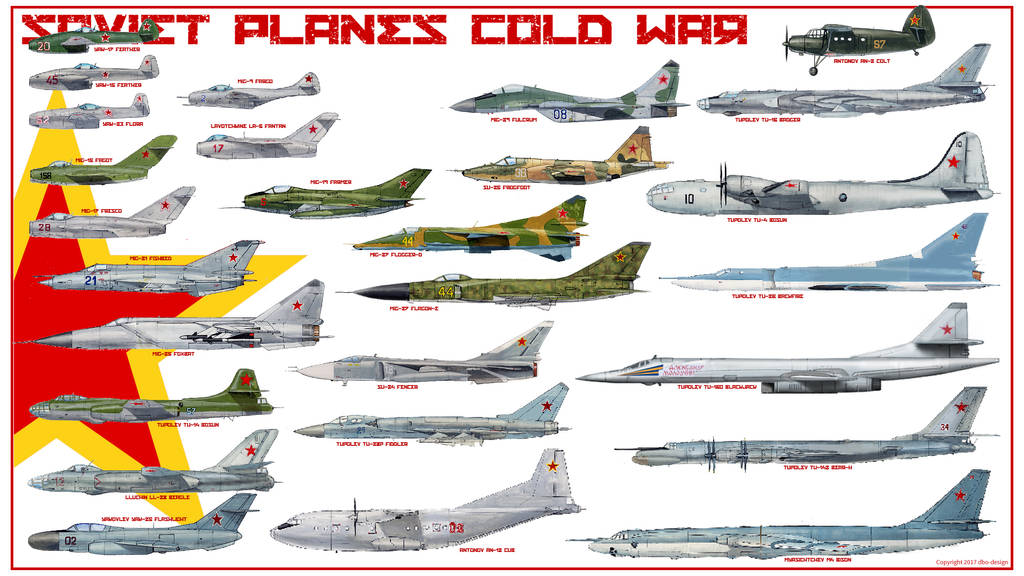
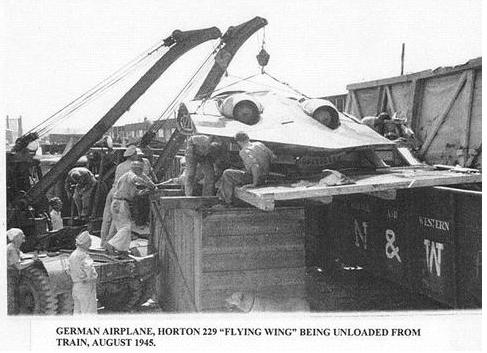 This story should required several volumes as it’s thick and amazing in scope and in detail. Long story short, the Soviet Air Force capitalized in its war experiences and mass-production products of WW2 to defined some of its priorities, but integrated Western technologies in both ends of the spectrum to access the next level in the immediate post-war technological race for better planes;
This story should required several volumes as it’s thick and amazing in scope and in detail. Long story short, the Soviet Air Force capitalized in its war experiences and mass-production products of WW2 to defined some of its priorities, but integrated Western technologies in both ends of the spectrum to access the next level in the immediate post-war technological race for better planes;
First, the same operation the Americans set in plane in 1945 (Operation Paperclip) occurred in the freed territories by the Red Army: Documents, models, prototypes, everything that was related to German research, and most importantly German scientists and engineers, were smuggled to the East. Spies also were part of rapid Soviet progresses: Famous British spiy Kim Filby passed some valuable informations and the British Rolls-Royce Nene was just shared to the Soviets in the open, at the astonishment of Stalin himself, by the new Labor government.
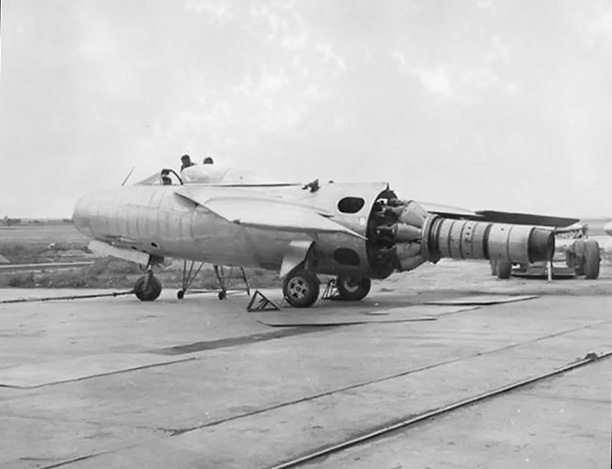 Comprehensively copied they formed the Klimov RD-45 that propelled the MIG-15, the best fighter jet of its era. Bomber-wise, that’s a single off-course B-29 in a routine mission over Japan that was intercepted over Soviet territory, forced to land and while the crew was released, the place was not. It was comprehensively reversed-engineered and became later the Tupolev Tu-4 “Bull”, the first Soviet long range modern heavy bomber, capable of carrying the Atomic bomb when it became available. Following Soviet bombers owe more to local engineering however, but this prize allowed to take shortcuts.
Comprehensively copied they formed the Klimov RD-45 that propelled the MIG-15, the best fighter jet of its era. Bomber-wise, that’s a single off-course B-29 in a routine mission over Japan that was intercepted over Soviet territory, forced to land and while the crew was released, the place was not. It was comprehensively reversed-engineered and became later the Tupolev Tu-4 “Bull”, the first Soviet long range modern heavy bomber, capable of carrying the Atomic bomb when it became available. Following Soviet bombers owe more to local engineering however, but this prize allowed to take shortcuts.
Back to the origins: The BI story
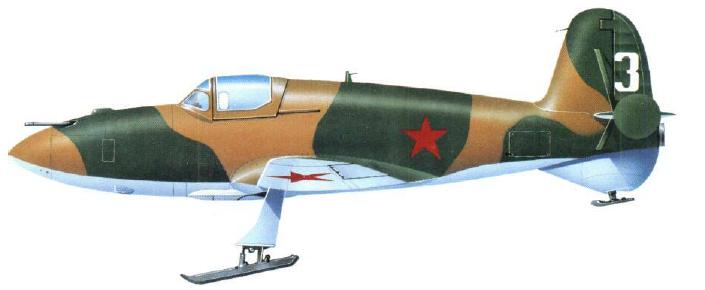
Soviet aviation already had a peak into jets with the wartime Bereznyak-Isayev BI-1, which first flew in May 1942 and was derived from the unmanned Korolev’s RP-318-1 rocket aircraft which flew in 1940. The head of OKB-293, Viktor Fedorovich Bolkhovitinov attended the TsAGI conference on ramjet and rocket propulsion along with two of his top engineers, A. Ya. Bereznyak and A. M. Isaev, which were later tasked to work on a new prototype based on Korolev’s engine. This was basically still a rocket aircraft, but with compressed air to force the propellant into the reaction chamber; The invasion of USSR put the program to a new level of emergency, and in this summer, project-G team and Andrey Kostikov the head of RNII sent a letter to Stalin and were answered back to have a prototype in 35 days. “BI” meant Blizhnii Istrebitel (close-range fighter).
This small, low-wing monoplane was to be armed with a pair of 20 mm (0.79 in) ShVAK cannon. The skin was plywood bonded with fabric cover, and the chemical propellant tanks were made of high-strength chromium-manganese-silicon steel pressured to 60 bar. The new plane was given test flights in the Urals. There were mild accidents but in January 1943 the BI-2 reached the speed of 675 km/h (364 kn; 419 mph) and the landing gear was switched from wheels to skis. The BI-3 reached an altitude of 4000 m (130000 ft) while the BI-4 was supposed to be the template, armed, for pre-production by Andrey Moskalev’s factory. In March there was a new accident, fatal of a BI-1. It was estimated the plane was pushed in the treshold of 800 kph or beyond.
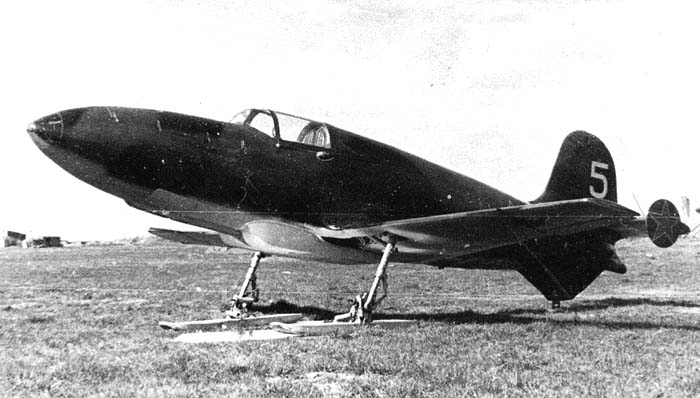
Studies went on by the team, back in Moskow, on the BI-5 and BI-6 in 1944. DM-4 ramjet engines were tested as well as a D-1-A-1100 engine. The BI-7 with the new RD-1 engine January 24 and March 9, 1945. But by that time the way forward was now shown by turbojets that used air, allowing much longer ranges, and the rocket plane program was abandoned. But the experienced team of Bolkhovitinov design bureau became prominent on the development of Soviet space industry and missiles afterwards.
Soviet jets propulsion in WW2
Using jet propulsion was not new for Soviet engineers. In the interwar already, various systems were used to boost some plane’s speed, in particular fighters, as a complement to their piston engine. In particular the Polikarpov I-152/153 tested various statoreactors like the DM2 and larger DM-4. These were the only known biplanes to have ever used an auxiliary jet propulsion, an interesting and odd shortcut in technologies.
This was only possible because of the extreme sturdiness of these planes, entirely metallic and built “like a tank” -a feature that is still characteristic, in a caricatural way for NATO pilots. Extreme resilience and low technology. In fact jet propulsion went back to the Tsarist Russian mathematician and multi-disciplinary, visionary engineer Konstantin Tsiolkovski, the fundation of GDL lab at Leningrad (first tests of jet prop. by V.P. Glouchko in 1928), and the GIRD (F.A.Tsander) an institute for the development and study of reaction propulsion.
Fusion will create the RNII in 1932, allowing the emergence of a new generation of scientists like Korolev and Tikhonravrov, with the blessing of Marshal Toukhatchevski. Financing came in 1933, and new engines were created and tested. This led to an interesting plane, the BiTCh-11, a flying wing that was to be propelled by Tsander’s OR-2 rocket, but never flew other than as a glider. It was reminiscent of the Me 163 Komet made by Lippisch and Messerschmitt during ww2.
Tsander passed out in 1933 (Typhus) replaced by L. Korneev, but more rockets are tested. In 1933 Korolev and ChtChetinkov created an ambitious two-seat cantilever rocket-propelled monoplane called RP-218, which stayed as a paper project. In the mid-1930s they promoted another project, the Raketonplan 318, a towed rocket plane capable of 1000 kph. However in 1937-38 Stalin’s purges severed the team (including Glouchko) and later even Korolev was sent to the Gulag for ten years.
Modified, the RP-318 was tested in February 1940. Meanwhile Loulka, assisted by Chtcherbakov and Kozlov created the RD-1, a compressed, eight-stage reaction propeller, but studies were cut short by the great relocation of all factories, bureau and facilities in the Urals. Only in the fall of 1944, as the Me 262 was operational, the TR-1 was tested. But it was produced only from 1947, incorporating technology from reverse-engineered BMW and Jumo engines.
An example of Pre-British Soviet early jet era:
-
Lavotchkine LA-15 “Fantail”
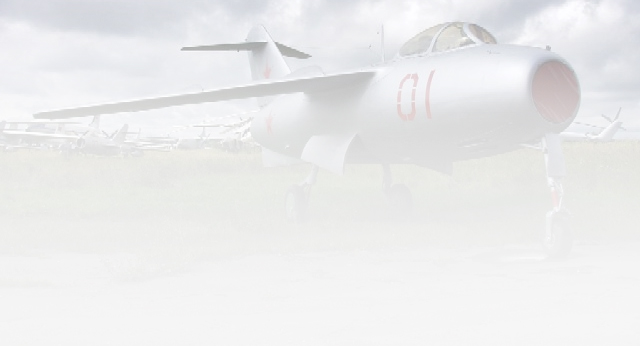
The Lavochkin La-15 was an early Soviet jet fighter, rival of the Mikoyan-Gurevich MiG-15, even better in some areas, but much more complicated and costly. It was known as NATO “Fantail”, but also Plant 21 Izdeliye 52, and USAF Type 21.
Development
Lavochkin already produced many propeller fighters in the War and already produced the La-150 to answer a 1945 order for a single-seat fighter using the German Junkers Jumo 004 turbojet adapted from captured Me-262s. The La 150 first flew in September 1946, followed by the La-152 in December 1946 with the engine relocated to the nose, reducing thrust loss. The La-160 was given the benefit of some German studies, and for the first time, swept wings. It flew in June 1947. Eventually the next La-168 (April 1948) used the new promising turbojet based on the Rolls-Royce Nene, in response to a 1946 specification for a transonic interceptor. Crucial to these developments, the recently acquired -out in the open- Rolls-Royce Derwent V and Nene turbojets were comprehensively reverse engineered and re-emerged as the Klimov RD-500 and Klimov RD-45. The La-15 Aircraft 174 was a backup but the main production was intended for the the Nene-powered Aircraft 168. The first was flown before the Mikoyan-Gurevich I-310 (MiG-15 prototype), on January 1948 but lost in May due to vibrations. The second 174D underwent State Acceptance Tests from August 1948 and had virtually identical performances to the MiG-15, better maneuverability but reduced rate of climb. Approved for production in September 1948 it was given the designation La-15 in April 1949.

Design
The plane had a barrel-like fuselage, the Klimov RD-500 (Derwent) engine was placed behind the pilot, and it had with shoulder-mounted swept wings with 6 degrees anhedral and a characteristic T-tail. It became popular with pilots because of its easy handling and pressurized cockpit. It was equally popular with ground crews as being reliable. However official enthusiasm was not that high, since the La-15 was basically much more complex to built compared to the MiG-15 requiring complicated and expensive production tooling and highly skilled workers. In the end, total production only reached 235 La-15s. They only served with the Soviet Air Force until 1953. A far cry from the Mig-15.
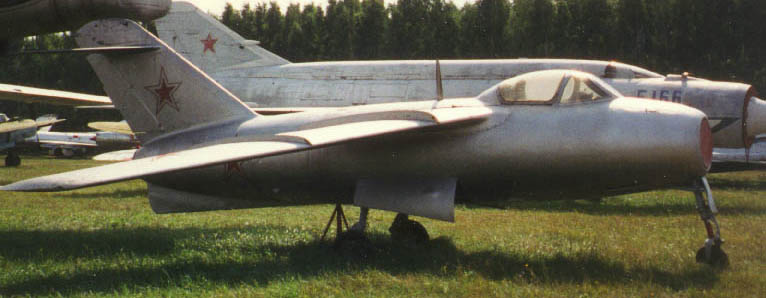
Operational History
A stated above, the La-15 only served for three little years. Production started in 1949 and went on in 1951, but it was tested operationally by the 192nd Fighter Wing at Kubinka in March 1949. It was directed to front-line combat units but this was accompanied by numerous accidents, which aggravated its case for the top brass although this was also the case for the MiG-15. In the end, the Soviet doctrine about ease of production being paramount, the development of this alternative fighter was killed and all the green lights were given to the MiG-15. The Soviet authorities therefore stopped production, but the La-15s already in service were disarmed by 1953. Some apparently never even flew. Their engines were dismounted and reused in the massive KS-1 Komet air-to-surface missile while the emptied planes were expended as nuclear bomb tests fodder. Of course the La-15 was never use in Korea and quickly faded into history and the unlucky MiG-15 rival.
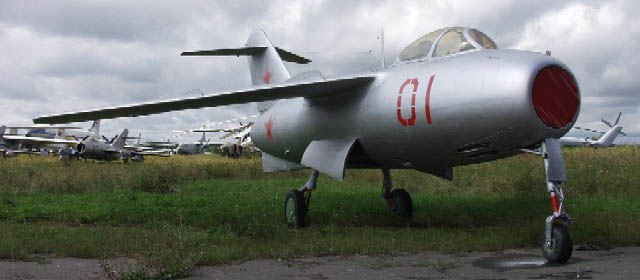
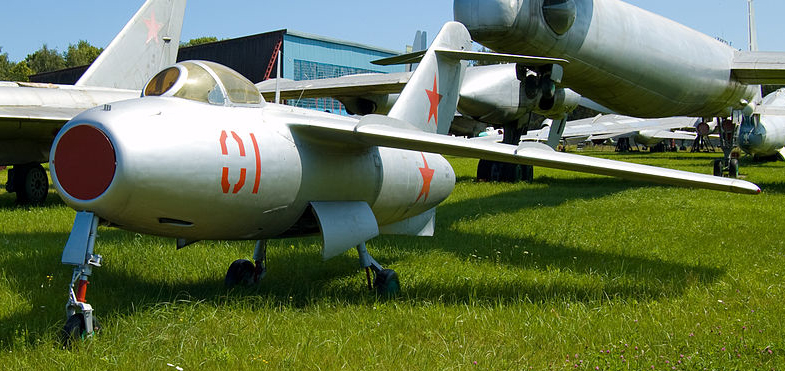
Variants
- Aircraft 174/174D: First and second prototypes with the Klimov RD-500 engine
- Aircraft 180: It was a planned trainer, two-seat conversion intended designation La-15UTI, that was dropped when the La-15 development was stopped as a whole.
Specs
Dimensions To come Weight 2,575 kg (5,677 lb)/3,850 kg (8,488 lb) Engine Klimov RD-500 centrifugal compressor turbojet, 15.59 kN (3,500 lbf) thrust, Fuel capacity: 1,060l (233.2Imp Gal), Wing loading: 238 kg/m2 (49 lb/sq ft), Thrust/weight: 1:2.4 Performances 1,007 km/h (626 mph; 544 kn) at 8,000m (26,350ft), Range: 1,145 km (711 mi; 618 nmi) at 10,000m (32,810ft), Service ceiling: 13,500 m (44,300 ft), Rate of climb: 31.7 m/s (6,240 ft/min), Time to altitude: 5,000m (16,400ft) in 3.1min, 10,000m (32,180ft) in 9min
List
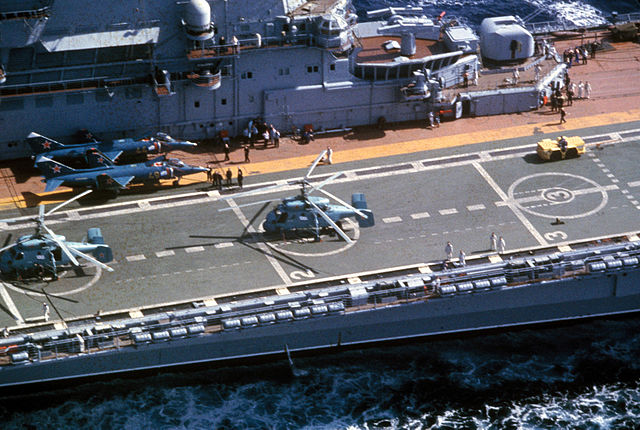
Yak-38 “Forger” and Kamov Ka-25 “Hormone” onboard Minsk
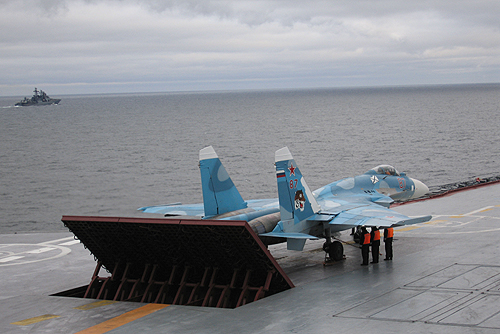
Su-33 catapulted from Adm. Kuznetsov
- Kamov Ka-25 “Hormone” (1972)
- Kamov Ka-27 “Helix” (1980)
- Mil-Mi 14 “Haze” (1980)
- Yakovlev Yak-38 “Forger” (1980)
- Mig-29K “Fulcrum-D” (1981)
- Su-33 “Flanker-D” (1998)
- Su-25 UTG “Frogfoot-D” (1991)
Sources
List of flying boats and floatplanes
Cold War Naval Aviation

 Latest Facebook Entry -
Latest Facebook Entry -  X(Tweeter) Naval Encyclopedia's deck archive
X(Tweeter) Naval Encyclopedia's deck archive Instagram (@navalencyc)
Instagram (@navalencyc)





 French Navy
French Navy Royal Navy
Royal Navy Russian Navy
Russian Navy Armada Espanola
Armada Espanola Austrian Navy
Austrian Navy K.u.K. Kriegsmarine
K.u.K. Kriegsmarine Dansk Marine
Dansk Marine Nautiko Hellenon
Nautiko Hellenon Koninklije Marine 1870
Koninklije Marine 1870 Marinha do Brasil
Marinha do Brasil Osmanlı Donanması
Osmanlı Donanması Marina Do Peru
Marina Do Peru Marinha do Portugal
Marinha do Portugal Regia Marina 1870
Regia Marina 1870 Nihhon Kaigun 1870
Nihhon Kaigun 1870 Preußische Marine 1870
Preußische Marine 1870 Russkiy Flot 1870
Russkiy Flot 1870 Svenska marinen
Svenska marinen Søværnet
Søværnet Union Navy
Union Navy Confederate Navy
Confederate Navy Armada de Argentina
Armada de Argentina Imperial Chinese Navy
Imperial Chinese Navy Marinha do Portugal
Marinha do Portugal Mexico
Mexico Kaiserliche Marine
Kaiserliche Marine 1898 US Navy
1898 US Navy Sovietskiy Flot
Sovietskiy Flot Royal Canadian Navy
Royal Canadian Navy Royal Australian Navy
Royal Australian Navy RNZN Fleet
RNZN Fleet Chinese Navy 1937
Chinese Navy 1937 Kriegsmarine
Kriegsmarine Chilean Navy
Chilean Navy Danish Navy
Danish Navy Finnish Navy
Finnish Navy Hellenic Navy
Hellenic Navy Polish Navy
Polish Navy Romanian Navy
Romanian Navy Turkish Navy
Turkish Navy Royal Yugoslav Navy
Royal Yugoslav Navy Royal Thai Navy
Royal Thai Navy Minor Navies
Minor Navies Albania
Albania Austria
Austria Belgium
Belgium Columbia
Columbia Costa Rica
Costa Rica Cuba
Cuba Czechoslovakia
Czechoslovakia Dominican Republic
Dominican Republic Haiti
Haiti Hungary
Hungary Honduras
Honduras Estonia
Estonia Iceland
Iceland Eire
Eire Equador
Equador Iran
Iran Iraq
Iraq Latvia
Latvia Liberia
Liberia Lithuania
Lithuania Mandchukuo
Mandchukuo Morocco
Morocco Nicaragua
Nicaragua Persia
Persia San Salvador
San Salvador Sarawak
Sarawak Uruguay
Uruguay Venezuela
Venezuela Zanzibar
Zanzibar Warsaw Pact Navies
Warsaw Pact Navies Bulgaria
Bulgaria Hungary
Hungary

 Bundesmarine
Bundesmarine Dutch Navy
Dutch Navy Hellenic Navy
Hellenic Navy Marina Militare
Marina Militare Yugoslav Navy
Yugoslav Navy Chinese Navy
Chinese Navy Indian Navy
Indian Navy Indonesian Navy
Indonesian Navy JMSDF
JMSDF North Korean Navy
North Korean Navy Pakistani Navy
Pakistani Navy Philippines Navy
Philippines Navy ROKN
ROKN Rep. of Singapore Navy
Rep. of Singapore Navy Taiwanese Navy
Taiwanese Navy IDF Navy
IDF Navy Saudi Navy
Saudi Navy Royal New Zealand Navy
Royal New Zealand Navy Egyptian Navy
Egyptian Navy South African Navy
South African Navy






























 Ukrainian Navy
Ukrainian Navy dbodesign
dbodesign